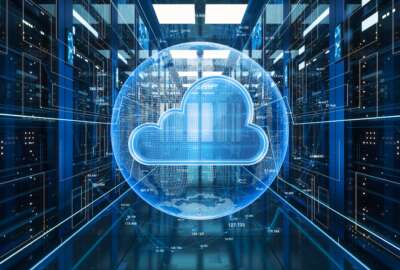Insight by Microsoft Federal
The four-step migration roadmap that smooths the path to classified cloud
With missions and challenges evolving at breakneck speeds, the cloud is crucial to expanding the reach of applications and data with greater speed and scalability.
This content is provided by Microsoft Federal.
Classified computing environments, which are crucial to ensuring the security of agencies’ missions, have traditionally been highly secure on-premise datacenters. But with missions and challenges evolving at breakneck speeds, the cloud is crucial to expanding the reach of applications and data with greater speed and scalability.
A classified cloud environment can be as secure as on-premise ones; both are air-gapped and require strict governance and authentication protocols—and both can be certified to support DoD Impact Level 6 (IL6)/Secret and Top Secret compliance.
Like other modernization efforts, certain considerations can make or break its success. What’s needed for a smooth transition is a proven migration roadmap.
Breaking down the process
When working with the cloud platform’s provider and a technology solutions partner, it’s essential to account for current requirements and future mission demands into account:
Step 1: Define the strategy. Always start with the desired outcomes: what are the expectations for the classified cloud environment? What should be different from the current platform, and what features, functions, and services take priority? It’s important to document who uses the system and what applications and connectors to other capabilities are needed.
Also, be sure to identify the system management services to be used within the cloud. When going out for bid, develop a list of RFI/RFP questions around the desired services while also considering the investments to be made in innovations such as generative AI and quantum computing.
Step 2: Planning. Next, the migration team looks at the organization’s current digital state and organizational alignment. This means understanding cost centers, setting up security profiles, identifying required cloud services, and assessing skills readiness on those services.
It’s also where to define responsibilities for executing cloud adoption tasks and the governance of the environment. This upfront effort helps minimize risk and sets the organization up for success.
Step 3: Implementation options. Now it’s time to build. An essential step here is building a “landing zone.” This is a cloud adoption framework that defines the new environment, from workflows and functions to governance and access controls.
Whether using pre-built modules, a completely customized architecture, or somewhere in between, this ensures the new environment supports mission requirements, user needs, security, applications, data, and connectivity to other resources.
Step 4: Migration. This is where the planning becomes tangible. Since the business processes are, in effect, the mission, it’s crucial to consider how they are accessed, maintained, scaled, and secured.
A direct “lift and shift” of an application may not make full use of the cloud’s potential, but could be right for some workloads. “Lift and optimize,” on the other hand, goes further to make key improvements without a complete overhaul of the mission. Finally, fully modernizing to cloud-native applications using a SaaS model can be a more intense effort, but innovation here can pay off in functionality and flexibility.
Along the way, organizations should plan for change management to ensure users can be productive in the new environment. The goal is to minimize disruptions to mission work while enabling users to take advantage of the cloud’s speed and agility.
In many cases, the most visible change will be that users no longer have to sign into a dozen siloed legacy systems to get work done. For the IT organization, moving away from maintaining slow, aging legacy systems will allow their teams to focus on mission support.
Outcomes and advantages
Metrics are different for every organization or use case, so they should be based on user requirements and expectations. Still, measuring the total cost of ownership (TCO), time and resources saved, and cost reductions from retiring legacy systems certainly come into play.
Historically, purchasing applications required a complex acquisition cycle and bill of materials (BOM). In a cloud environment, solutions can be implemented or upgraded exponentially faster than in a traditional datacenter. This Platform-as-a-Service (PaaS) or Infrastructure-as-a-Service (IaaS) model has another benefit: costs can be moved from CapEx to OpEx.
Less tangible—but still critical—is balancing the speed of innovation and the value of resilience and near-instant scalability versus continuing to rack-and-stack servers. The cloud makes preparing for newer technologies, such as AI, much more practical. Overall, a cloud platform helps make the entire organization more agile and adaptable in the face of fast-changing events.
Readiness for a secure future
Since the cloud opens up a world of speed, flexibility, and innovation, moving mission workloads to these protected environments is vital to maintaining a competitive advantage.
With a clear, four-step migration roadmap, organizations and their technology partners can streamline the process—resulting in fewer surprises, greater productivity, and a new, more effective resource to support the mission.
Learn more about how to start your classified cloud journey using Microsoft’s cloud adoption framework at Cloud adoption scenario for defense – Cloud Adoption Framework | Microsoft Learn.
Copyright © 2025 Federal News Network. All rights reserved. This website is not intended for users located within the European Economic Area.





